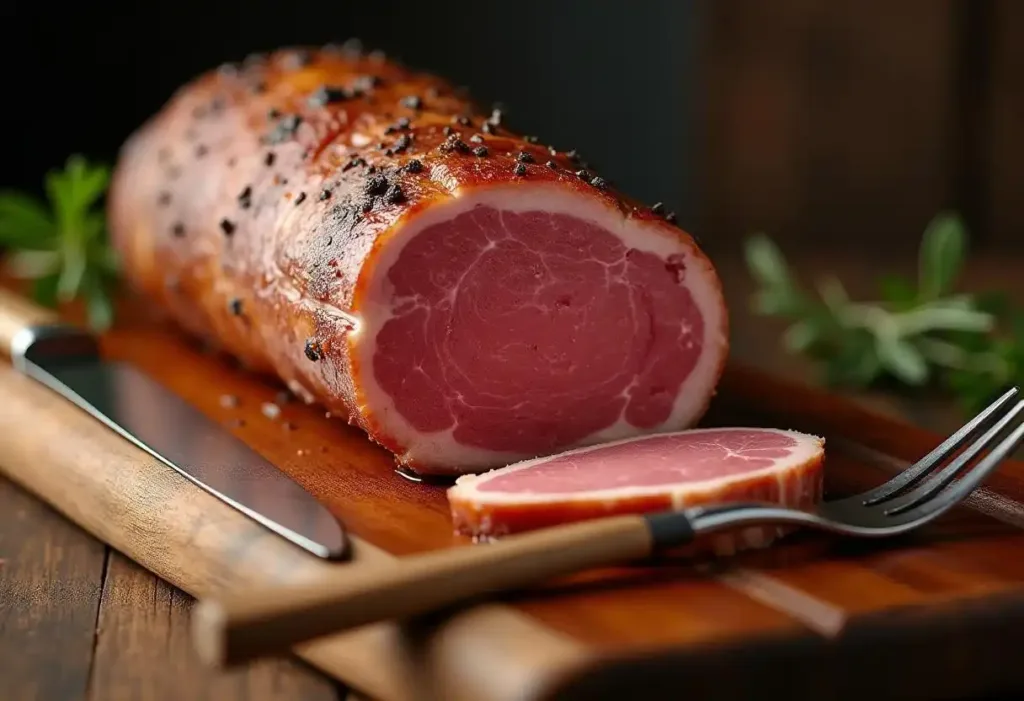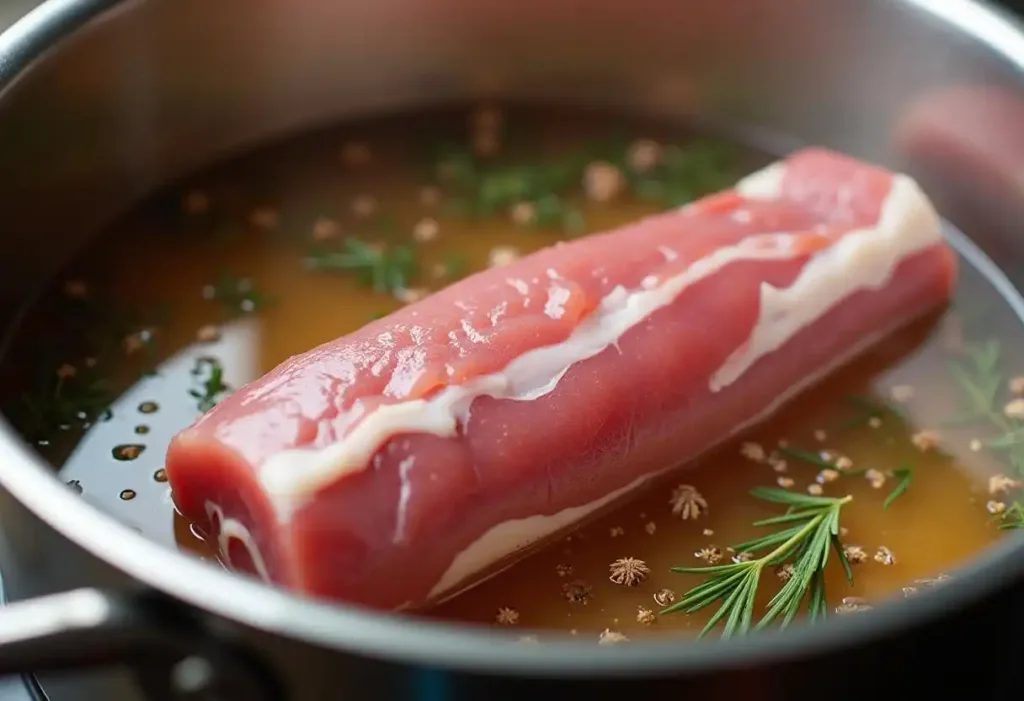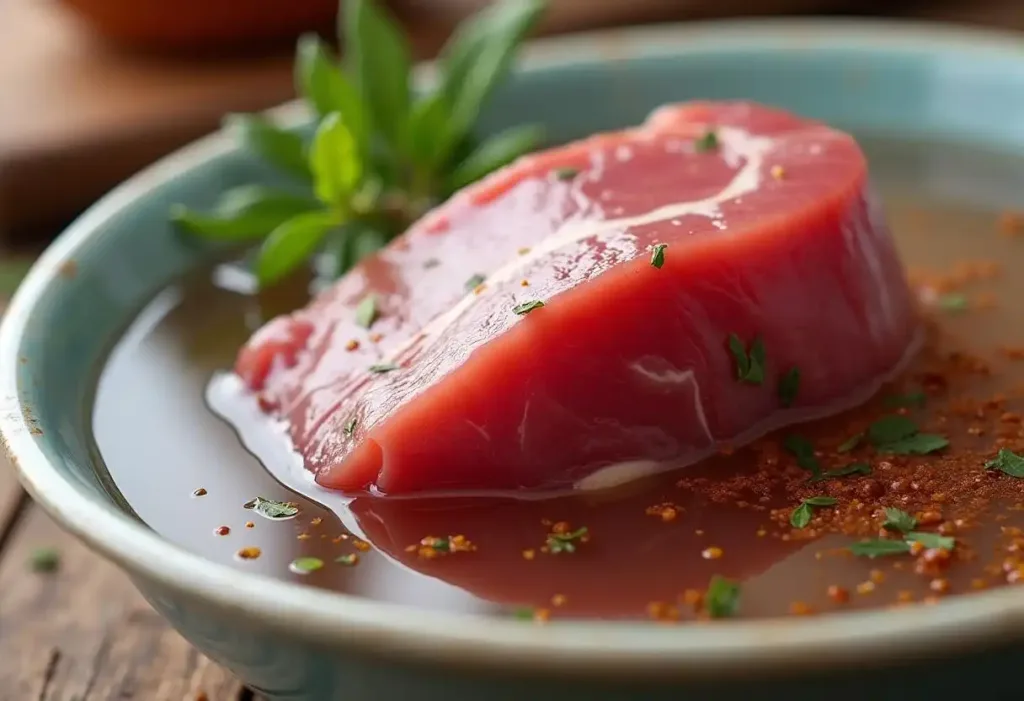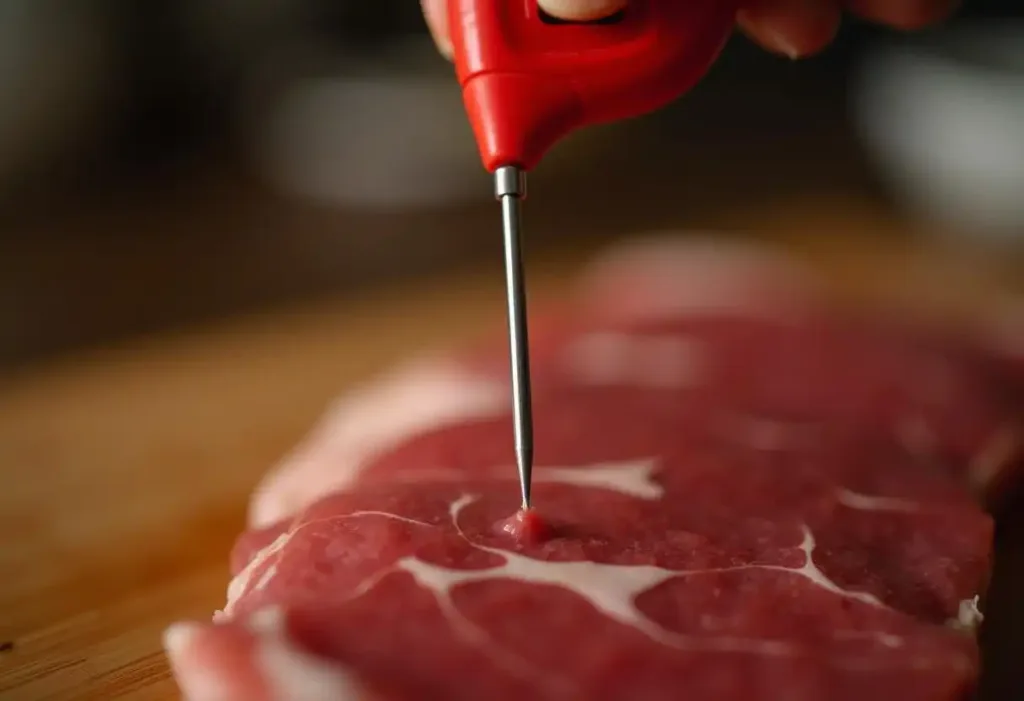Okay, let’s have some real talk, amici. Cooking a big ol’ gammon joint can feel a little bit intimidating, right? Especially with all the conflicting advice flying around. Nonna had her way, cookbooks say another, my goofy husband probably has a terrible pun about it… it’s enough to make your head spin! And the number one question I hear, the big kahuna of gammon confusion, is this: do you have to boil gammon before roasting? Mamma mia! It’s the ultimate kitchen question mark. I’ve totally been there, staring at that pink hunk of potential deliciousness, wondering if it needs a hot bath first or just a straight shot into the oven. If you’re nodding along, trust me, you are so not alone. It’s a debate as old as… well, as old as tasty cured!
So, let’s unravel this mystery together. We’re gonna dive deep into the whole “do you have to boil gammon before roasting” thing, look at why some folks swear by it and others skip it, and help you decide the best path to juicy, flavorful gammon glory. Whether you’re a first-timer or a seasoned pro just looking for a refresher, stick with me! Grab a coffee (or hey, maybe a little Pinot Grigio, I won’t tell!), and let’s figure this out. Promise by the end, you’ll know exactly what to do!
Understanding Gammon and Its Preparation
Gammon Basics: What You Need to Know
Alright, first things first. Before we jump into the boiling debate, let’s get friendly with gammon itself. What is this stuff, anyway? Simply put, it’s a leg of, that’s been cured, usually with salt and sometimes sugar or other spices. Nonna always said, “Know your ingredients like you know your family!” This curing process is what preserves the meat and gives it that distinctively delicious, savory flavor. You’ll see it sold different ways – smoked or unsmoked, bone-in or boneless. Understanding the difference between gammon and roast ham is key: gammon is raw cured meat that needs cooking, while ham is typically sold already cooked.
Because it’s raw and cured (hello, salt!), gammon needs some prep before it hits the heat. That curing salt is the main reason the whole “do you have to boil gammon before roasting?” question even exists. Boiling is often the first step people think of to manage that saltiness and start the cooking process, but is it truly essential ? Does that salty cure demand a boil? Let’s dig into the arguments!
The Case for Boiling: The Pros
The Boiled Gammon Brigade: Why Some Swear by It
Okay, let’s chat about the “Boiled Gammon Brigade” – those trusty home cooks and chefs who wouldn’t dream of roasting without boiling first. And you know what? They’ve got some solid points! There are definitely good reasons why giving that gammon a simmer before it sees the oven is a popular move. Let’s break down the perks.
Tenderizing the Meat
First up: tenderness! Especially with a larger, potentially tougher joint, a gentle boil can be like a spa treatment for your gammon. The warm water helps to relax and break down some of those connective tissues and muscle fibers. The result? A more tender, melt-in-your-mouth texture that’s just divine. If you’re aiming for maximum succulence, boiling can definitely give you a head start towards keeping your gammon moist and tender.
Reducing Saltiness
This is the big one for many folks. That curing process means gammon can be quite salty. Sometimes, too salty for some tastes. Boiling helps to draw out some of that excess salt into the water, giving you a more balanced flavor in the final roast. It’s a lifesaver if you’re watching your salt intake or just prefer a milder taste. Pro tip from my Nonna’s playbook: you can add flavor to the boiling water! Toss in a bay leaf, some peppercorns, an onion, maybe a carrot – it infuses the meat subtly as it simmers.
Pre-cooking for Efficiency
Finally, boiling gives the cooking process a jumpstart. It partially cooks the meat, meaning less time is needed in the hot oven later. This can be a real win if you’re short on time or juggling multiple dishes for a big meal. So, when you’re pondering “do you have to boil gammon before roasting?” and the clock is ticking, boiling first can definitely streamline things. It gives you a bit more control over the roasting time, focusing it more on getting that beautiful glaze and finish rather than cooking the joint all the way through. For more technical insights on cooking ham and gammon, this guide on how to cook a ham or gammon from Serious Eats is quite thorough.
Makes sense, right? But hold your horses (or pigs!), because the story doesn’t end there. Let’s hear from the other side – the folks who say “no way” to the boil!
The Case Against Boiling: The Cons
The No-Boil Nation: Reasons to Skip This Step
Alright, shift gears! Let’s talk to the “No-Boil Nation” – the cooks who march their gammon straight to the roasting pan without a watery detour. They’ve got their reasons too, and they’re definitely worth considering. Skipping the boil isn’t just about saving a step; for many, it’s about preserving flavor and texture. Let’s see why they ditch the boiling pot.
Loss of Flavor
This is probably the biggest argument against boiling. Remember how boiling helps leach out salt? Well, the worry is that it doesn’t just take the salt – it can take some of that delicious, piggy, cured flavor along with it, washing it right down the drain. Mamma mia, the tragedy! If you’ve splashed out on a really lovely piece of gammon, you want to taste all of that goodness. Roasting it directly allows those flavors to concentrate and deepen, rather than potentially getting diluted in boiling water. It lets the gammon be the star, you know?
Potential for Dryness
Okay, plot twist! While boiling can tenderize, if you overdo it, you risk the opposite: a dry, sadly tough gammon. Yikes! It’s easy to accidentally boil it for too long, cooking the moisture right out of the meat before it even sees the oven. Getting the timing perfect can be tricky. For some cooks, skipping the boil entirely feels like a safer bet for ensuring a juicy result, relying instead on careful roasting techniques. After all, a good roast deserves some delicious companions, like these fantastic roast gammon sides.
Time is of the Essence
Let’s be honest, boiling adds a significant chunk of time to the whole gammon cooking adventure. You’ve got to wait for that big pot of water to boil, then the simmering time itself… If you’re already feeling rushed, adding an extra hour or more might just feel like too much hassle. So, when weighing “do you have to boil gammon before roasting?”, simplicity and speed are valid points in the ‘no-boil’ column.
For those looking for a quicker path to roast gammon deliciousness, heading straight for the oven is mighty tempting. Plus, as the folks at All Recipes point out in their tips on how to cook gammon (remembering gammon needs cooking, unlike pre-cooked ham!), there are other ways to manage saltiness, like soaking.
Soaking vs. Boiling: Is there a difference?
A Quick Soak or A Long Boil?
Okay, so we’ve got Team Boil and Team No-Boil. But wait, there’s a third option that often gets mentioned: soaking! Is giving your gammon a cold-water bath a good middle ground? How does it stack up against boiling? Let’s investigate.
What’s the point of soaking?
Soaking is basically boiling’s gentler cousin. The main goal is the same: reducing that saltiness. You simply plop your gammon joint into a big bowl or pot, cover it generously with cold water, and let it hang out in the fridge. The salt gradually leaches out into the water over time. Most folks recommend soaking for several hours, or even overnight for really large or salty joints, changing the water a couple of times. The big advantage? It’s much less aggressive than boiling, so the theory is you reduce the salt without sacrificing as much flavor or risking cooking the meat prematurely.
What to do instead of boiling?
So, if you decide to skip the boil (and maybe even the soak), how do you ensure that gammon is still tender and delicious? Focus on your roasting technique! Cooking it low and slow – think around 325°F (160°C) – allows the heat to penetrate gently, breaking down connective tissue without drying the meat out. Basting is your best friend! Spooning those lovely pan juices (or your glaze) over the gammon every 20-30 minutes keeps things moist. And please, please, please let it rest after roasting! Tent it loosely with foil for at least 15-20 minutes before carving. This lets the juices redistribute, making every slice juicier. No kidding, resting makes a huge difference!
How to Roast Gammon for Maximum Moisture
Roasting Your Gammon to Perfection
Okay, the moment of truth! Whether you boiled, soaked, or did neither, the roasting part is where the real magic happens. This is how we get that gorgeous, caramelized crust and juicy interior. Forget pondering “do you have to boil gammon before roasting” for a second – let’s talk roasting success! My number one tip? Get yourself a meat thermometer. Seriously, it takes the guesswork out! You’re aiming for an internal temperature of around 160°F (71°C) for perfectly cooked, safe-to-eat gammon. No more poking and prodding, hoping for the best!
Remember Basting? Yes, I’m saying it again! Every 20-30 minutes, give that gammon some love with the pan juices or your glaze. It builds flavor and is key to keeping the gammon moist. And that glaze! Whether it’s a simple honey mustard like this classic from Jamie Oliver, or something fancier, apply it during the last 30-45 minutes of roasting so it gets sticky and delicious, not burnt. And finally (are you sensing a theme?), REST YOUR GAMMON! Tent it with foil for 15-20 minutes before carving. It allows those juices to settle back into the meat, ensuring every slice is succulent. Buon appetito!
Frequently Asked Questions (FAQ)
Alright, let’s quickly tackle some of those common head-scratchers about the boil-or-not-to-boil gammon situation. I get asked these all the time!
Q: Should you boil gammon before roasting?
A: Honestly? It’s totally up to you! There’s no strict rule saying you *must* boil it. Boiling helps make it tender and less salty, which is great. But, you might lose a little flavor, and roasting directly can give a deeper taste. So, it’s optional! Think about how salty your gammon might be (ask your butcher!) and how much time you have.
Q: Do you have to boil a ham before cooking?
A: Nope! This is a common mix-up. Remember, most ‘ham’ you buy in the US is already cooked. Gammon is the *raw*, cured leg that needs cooking. Ham just needs reheating (or glazing and heating). So, no boiling needed for ham! Check out the key differences between gammon vs roast ham if you’re unsure.
Q: Do I need to soak a gammon joint before cooking?
A: Soaking is another option, also not strictly required! It’s a gentler way to reduce saltiness compared to boiling. If you know your gammon is particularly salty, or you prefer a milder flavor, soaking overnight in cold water (change it once or twice) is a great idea. If it’s a milder cure, you can probably skip it.
Q: How do you keep gammon moist when roasting?
A: Easy peasy! My top tips: 1) Don’t overcook – use that meat thermometer (aim for 160°F / 71°C). 2) Baste, baste, baste! Every 20-30 mins with pan juices or glaze. 3) Consider roasting low and slow. 4) Let it REST for 15-20 mins before carving. Follow these, and you’ll nail it! We’ve got more details on how to keep gammon moist right here.
Conclusion
So, what’s the final word on the big question: do you have to boil gammon before roasting? Drumroll, please… The answer is a resounding it depends! I know, I know, maybe not the simple “yes” or “no” you were hoping for, but it truly comes down to your gammon, your taste buds, and your schedule. Neither way is right or wrong; they just give slightly different results. Hopefully, knowing the pros and cons helps you decide what’s best for your kitchen and your hungry family (even the picky eaters like my son!).
The most important thing? Don’t let the “rules” intimidate you! Whether you boil, soak, or just roast, cook it with love (and maybe have a little kitchen dance party while you’re at it!). Find the method that gives you results you adore. If you’re ready to put these tips into action, why not try our fantastic gammon roast dinner recipe perfectly moist and flavorful? And don’t forget the perfect roast gammon sides to go with it! Now go forth and conquer that gammon! Let me know in the comments which method you prefer! Buon appetito!





